Effective employment practices go beyond traditional hiring policies to build a team that’s motivated, aligned, and capable of driving long-term success. As businesses seek new ways to improve how they attract, hire, and engage talent, integrating WHY.os can provide a fresh approach to selecting and developing team members.
The WHY.os framework examines three primary dimensions: WHY, HOW, and WHAT. Understanding these elements gives businesses deep insights into potential and current team members, enabling a more strategic approach to employment practices that promotes cohesion, productivity, and retention.
What Is the WHY.os and How Does It Work?
The WHY.os framework breaks down into three essential components that capture the core of an individual’s character and work style:
- WHY: This is the driving motivation that fuels a person’s actions and decisions. Understanding the WHY helps to align an individual’s deeper motivations with company goals and objectives, ensuring they’re more likely to be engaged and fulfilled in their role.
- HOW: This describes how someone expresses their WHY. Individuals with similar motivations might approach their work differently. For example, one person’s HOW might involve detailed analysis, while another’s might focus on creative thinking or strategic oversight.
- WHAT: This represents what a person consistently brings to the team—reliability, innovation, problem-solving, or another unique strength. Understanding an individual’s WHAT allows companies to leverage their contributions effectively for team success.
These three elements form a person’s “operating system” (.os), their blueprint for operating within the world and working with others. In the context of employment practices, using the WHY.os framework can lead to significant improvements in hiring, onboarding, team dynamics, and leadership.
Why Integrate the WHY.os into Employment Practices?
Integrating the WHY.os framework into employment practices allows companies to go beyond surface-level assessments and see team members and potential hires as multifaceted individuals with unique motivations and approaches. Here’s how WHY.os can be applied across various aspects of employment:
Transforming Hiring Policies
Traditional hiring methods often focus on candidates’ technical qualifications and past experiences. While these are important, they don’t provide the complete picture of whether someone will thrive within the company culture. Incorporating the WHY.os framework enables hiring managers to understand candidates’ motivations and how they align with the organization’s mission and values.
Interview Strategies: Instead of limiting interviews to questions about past roles and achievements, the WHY.os approach encourages questions that reveal a candidate’s motivations and work style:
- “What motivates you to take on challenging projects?”
- “How do you approach tasks that require creative problem-solving?”
- “What kind of work environment helps you perform your best?”
These questions help hiring managers identify candidates whose WHY aligns with the company’s purpose. For example, if a candidate’s WHY is to “contribute,” they may be an excellent fit for collaborative, team-oriented roles. Conversely, someone whose WHY is to “make sense” might excel in analytical or strategic positions. By integrating these insights, companies can make more informed decisions that lead to better long-term outcomes.
Structured Assessments: Incorporating the WHY.os assessment as part of the hiring process allows companies to better understand a candidate’s potential beyond their resume. This not only aids in finding technically competent team members but also ensures that new hires resonate with the company’s culture and values, reducing turnover and boosting retention.
Personalized Onboarding and Integration
The onboarding process sets the stage for a new hire’s experience within the company. A generic onboarding strategy may not effectively engage all team members. However, by using WHY.os insights, companies can tailor the onboarding experience to fit each individual’s unique HOW and WHAT.
Customized Onboarding Plans: For example, a new hire whose HOW is detail-oriented may appreciate an onboarding process that includes comprehensive documentation, checklists, and precise instructions. On the other hand, someone whose HOW involves big-picture thinking might thrive with an overview of company strategies and long-term goals, followed by discussions on how their role fits into this larger context.
Role-Specific Onboarding: Understanding a team member’s WHAT can also influence assigned responsibilities. If a person’s WHAT is rooted in innovation, assigning tasks that encourage creative thinking and brainstorming early on can engage them more effectively and make them feel valued.
Fostering Early Connections: Team integration is another critical aspect of onboarding. Organizing introductory meetings that discuss each team member’s WHY, HOW, and WHAT can help new hires better understand their colleagues and build rapport faster. This shared understanding fosters a sense of belonging and reduces the time it takes for new hires to feel like part of the team.

Strengthening Team Synergy and Collaboration
The WHY.os framework enhances individual roles and strengthens team dynamics by fostering a deeper understanding among colleagues. When team members know each other’s motivations and work styles, they can collaborate more effectively and leverage complementary strengths.
Building Balanced Teams: A manager with WHY.os insights can assemble strategically balanced teams. For instance, in a project requiring creativity and precision, leaders can form a team with members whose HOWs complement one another. A detail-oriented team member could focus on refining ideas, while a big-picture thinker could drive overall strategy. This alignment reduces friction and boosts productivity by placing people in roles where they can contribute most effectively.
Improved Communication: Miscommunications often arise when team members approach problems differently. The WHY.os framework helps teams appreciate these differences and adapt their communication accordingly. Knowing that one team member thrives on brainstorming while another prefers data-backed discussions can lead to more respectful and effective dialogues.
Conflict Resolution: The WHY.os also aids in resolving conflicts by providing insight into how different people handle challenges and disagreements. For instance, if one team member’s HOW involves methodical, step-by-step problem-solving while another’s leans toward quick decision-making, knowing these tendencies can help mediate conflicts before they escalate. This understanding enables teams to approach challenges with empathy and work towards solutions that take everyone’s style into account.
Empowering Leadership and Supporting Retention
Leaders who leverage the WHY.os framework are better equipped to inspire and retain their teams. Understanding what drives each team member allows leaders to offer more personalized support, fostering a culture where individuals feel valued and understood.
Motivating Through Individualized Support: A leader who knows that a team member’s WHY is “mastery” can provide opportunities for that person to deepen their expertise, such as specialized training or leading complex projects. For a team member whose WHY is to “contribute,” offering mentorship roles or collaborative projects could be more fulfilling. This tailored support builds trust and loyalty, which are crucial for long-term retention.
Career Development and Growth: The WHY.os framework helps leaders map career paths that resonate with their team members’ motivations. Team members are more likely to stay with an organization that recognizes their strengths and aligns their career goals with their personal WHY. This approach makes performance reviews more meaningful and creates a roadmap for professional growth that benefits both the individual and the company.
Engagement Beyond the Role: Leadership using WHY.os insights can promote a culture that extends beyond work-related tasks. Recognizing and discussing individual motivations during team meetings or workshops can keep morale high and make team members feel more connected to the company’s vision.

Realizing the Practical Benefits of WHY.os
Integrating the WHY.os framework into employment practices brings about practical, tangible benefits:
Boosted Team Morale and Engagement
Team members who feel their unique contributions and motivations are understood are more engaged and committed to their work. The WHY.os framework helps create a work environment where people feel recognized for their unique value, leading to higher morale and job satisfaction.
Example: A team member whose WHY is to “make sense” will feel most engaged when given complex problems to solve or when their logical approach is appreciated. Celebrating these contributions can create a positive feedback loop that keeps team members motivated and invested in their roles.
Enhanced Communication and Team Cohesion
Understanding team members’ HOWs and WHATs improves communication by setting clear standards and reducing misunderstandings. For instance, if a team member known for their innovative HOW presents an unconventional idea, colleagues can better appreciate this approach when they understand its roots in their operating system. This awareness leads to a more open-minded work environment, where diverse approaches are seen as assets rather than obstacles.
Conflict Mitigation: The WHY.os framework also aids in proactive conflict mitigation. By understanding why and how team members react to stress and challenges, leaders and colleagues can address potential issues with empathy and insight, ensuring smoother resolutions.
Increased Productivity and Innovation
Teams that are aligned with their WHYs and effectively use their HOWs and WHATs are more productive. When their unique perspectives are welcomed and respected, they are also more inclined to experiment and contribute innovative ideas.
Task Allocation: Assigning tasks that align with each team member’s strengths—detailed-oriented work, creative brainstorming, or process optimization—ensures everyone operates at their highest potential. This strategic allocation of responsibilities not only boosts individual productivity but also elevates team output.
Organizational Alignment and Unified Purpose
The WHY.os framework supports organizational alignment by creating a shared understanding of motivations and values. When individuals and teams are aligned with the company’s purpose, there is a stronger sense of unity and shared direction.
Strategic Planning: When launching new initiatives or setting long-term goals, incorporating WHY.os insights ensures that projects resonate with team members’ core motivations. This alignment leads to greater buy-in and more dedicated participation as team members see their personal WHY reflected in the company’s strategy.
Onboarding and Retention Strategies: From the first interaction with a candidate to their long-term growth within the company, the WHY.os framework can be seamlessly integrated to maintain alignment. This continuity helps prevent the common disconnect when initial enthusiasm fades, supporting sustained engagement and loyalty.
Implementing WHY.os: A Step-by-Step Guide
To effectively integrate the WHY.os into your employment practices, consider the following steps:
- Conduct the WHY.os Discovery Assessment: Have current team members and candidates complete an assessment to reveal their WHY, HOW, and WHAT. This step provides a foundational understanding that informs the rest of the process.
- Review Results with a Certified WHY.os Coach: If possible, engage a certified WHY.os coach to help interpret the assessment results. This expertise ensures that insights are accurately understood and applied.
- Plan Individualized Onboarding and Integration: Use the WHY.os results to create tailored onboarding programs that set new hires up for success from day one.
- Host Group Debrief Sessions: Organize team meetings to share and discuss each member’s WHY, HOW, and WHAT. This step fosters understanding and strengthens team relationships.
- Incorporate Insights into Performance Reviews and Career Planning: Make WHY.os insights a part of regular performance evaluations and career development discussions. This practice ensures team members receive feedback and opportunities aligning with their motivations and strengths.
- Apply WHY.os in Ongoing Team Management: Continuously refer to WHY.os insights during team meetings, project planning, and conflict resolution to maintain alignment and cohesion.

Sustaining the Benefits of WHY.os
The long-term impact of integrating WHY.os into employment practices extends beyond immediate benefits. Over time, companies will notice stronger team cohesion, increased innovation, and higher retention rates. The framework fosters a work culture where team members feel their contributions are valued and their career paths are supported in a way that aligns with their motivations.
The WHY.os framework offers a strategic approach to employment practices beyond basic qualifications and job descriptions. By understanding and integrating each team member’s WHY, HOW, and WHAT, companies can build stronger, more cohesive teams that thrive on shared purpose and motivation. This approach ensures that hiring, onboarding, and team management practices align with individual and organizational goals, fostering a culture of engagement and sustained growth.
Ready to elevate your employment practices? Contact 4 Leaf Performance today to explore how our WHY.os package and business coaching services can help your team thrive and align with your company’s vision for success.



